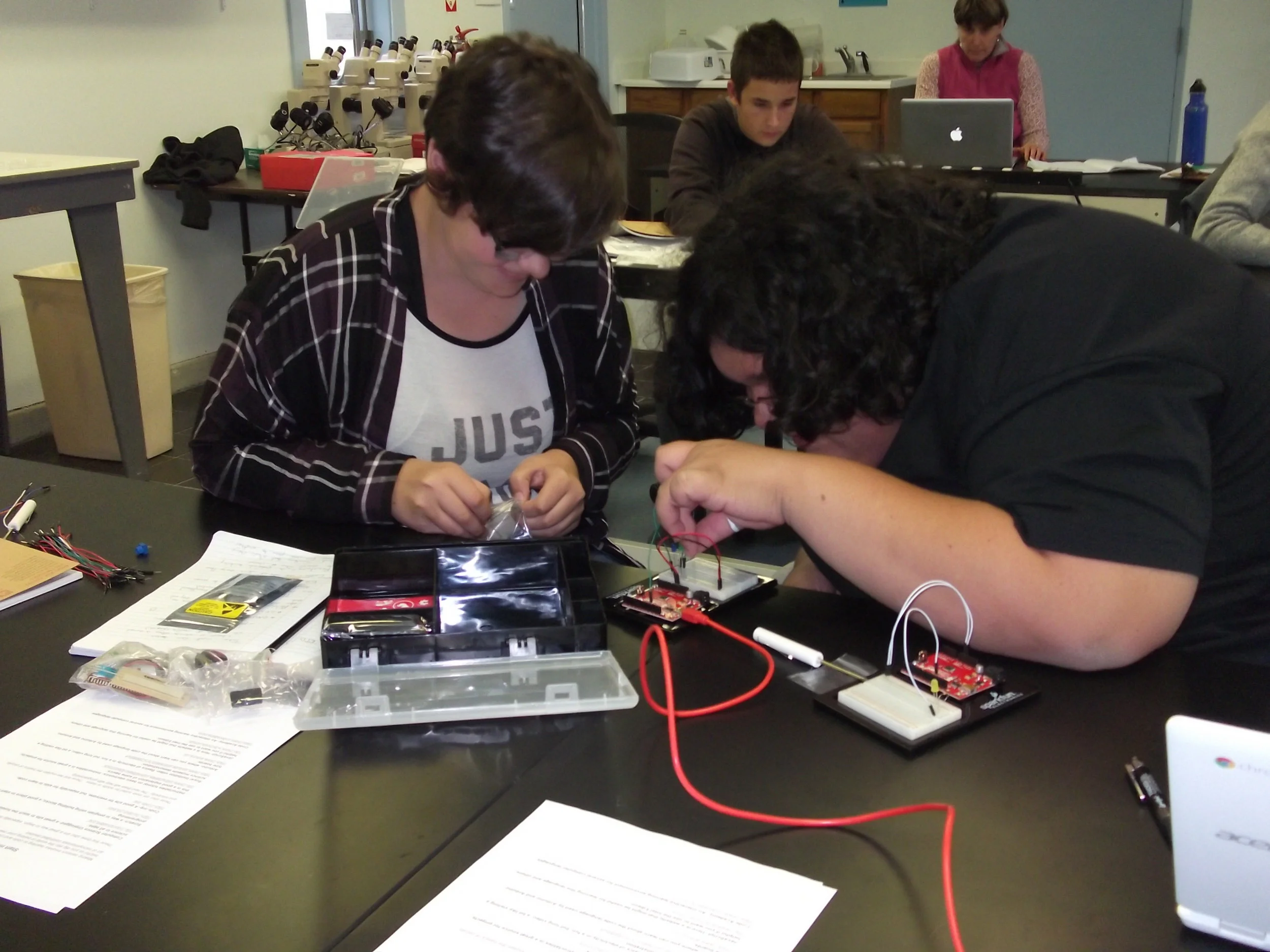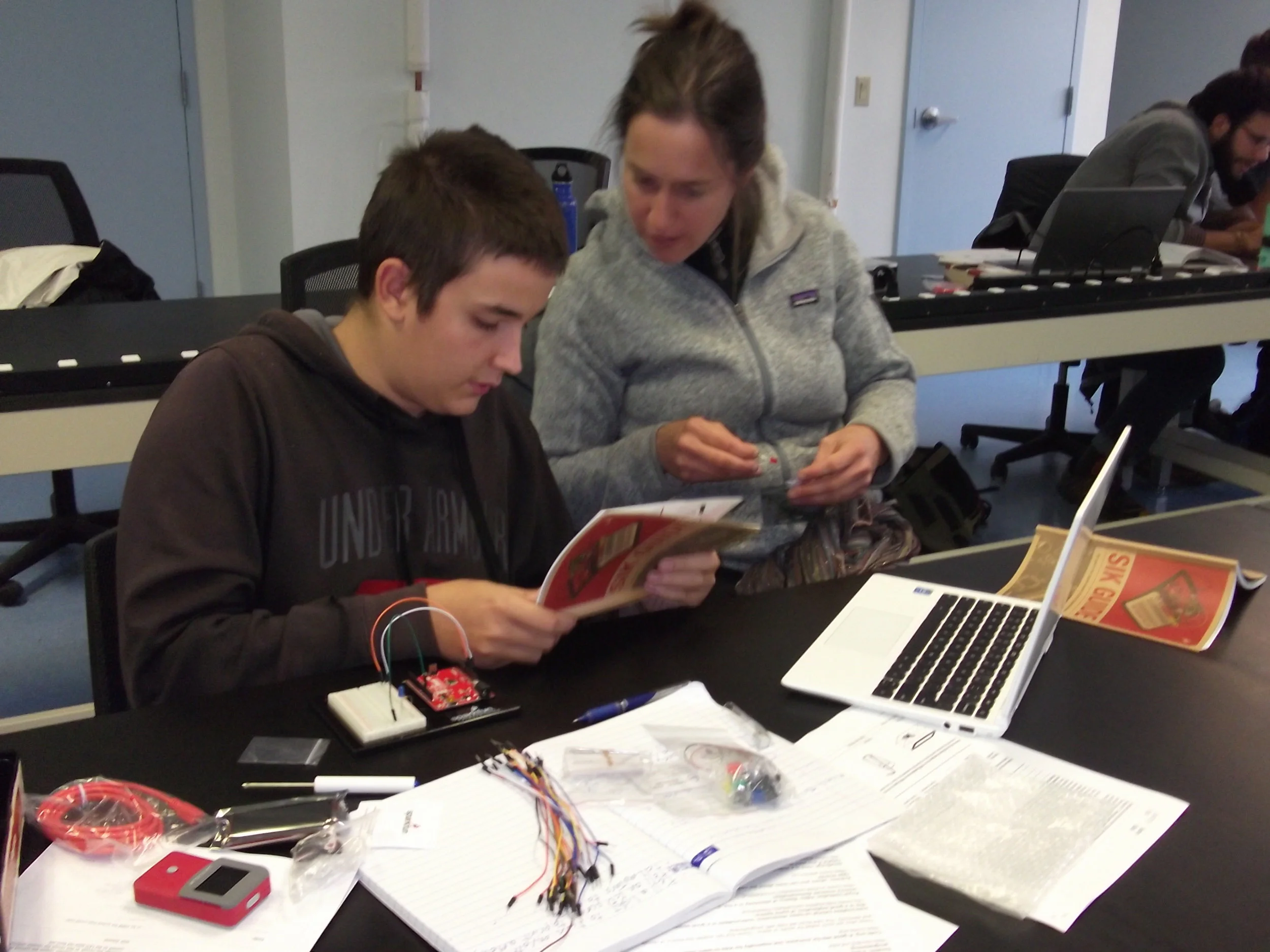By Kara McCrimmon, Cobscook Lead Teacher
Trey: “What if you have that glide, and then set the code to glide again?”
Jacob: “So I pick the position where I want it to start and then change the costume each time? I want to find that somewhere in my scripts, and copy that in.”
Trey and Jacob are hunched together over Jacob’s computer. They’re creating animated models of atomic bonding for chemistry class, a new offering at Cobscook this year. Each student has a different compound – methane, propane, chloric acid. Jacob has tetrafluoromethane, and he’s trying to make four fluorine atoms fly across the screen at specific times, link with a carbon atom, and lock into place. He’s not satisfied with his timing. Trey is helping him figure out the right code, using a Massachusetts Institute of Technology coding program called Scratch. The coding part of the project is a skill they’re learning for a class called Computational Thinking and Digital Applications. This is another of Cobscook’s new courses, the result of work last year and this to expand from a two- to a four-year high school program that serves Washington County students.
“Not just “learning by doing,” but “learning by reflection on doing.””
“You’re doing it that way? There’s an easier way!” Trey is leaning over to Gus’s computer now. He’s figured out the coding part of the process, and is now teaching his classmates. “Can I help anyone out?” he calls out as he moves on from Gus’s computer.
Cobscook, which operates through a contract with Calais High School, is inspired by a number of models of education, one of which is interdisciplinary learning. Animating compounds is one example of an interdisciplinary approach. To take the interdisciplinary example further, Cobscook students are also taking a health and wellness class this year. Right now students are studying nutrition. As part of that, they’ve researched the role of specific minerals in body function and shared their findings to one another. The minerals – calcium, copper, sodium, iodine, etc. – are all elements they’ve been studying in chemistry, and now they’re making connections between chemistry and physical health. Soon they’ll make “mineral meals,” lunches prepared by the group that represent nutritionally complete offerings. With interdisciplinary education, it’s all connected.
“An opportunity to study science, writing, leadership, language, and more in the classroom, in the community, and beyond.”
When asked, most of this year’s students will report that they love learning chemistry the most. There was almost an audible cheer when they figured out the pattern for valence electrons in the outer shell of an atomic model. Just as our students have discovered new passions for chemistry, computing, or even kelp aquaculture (another project this year), our Cobscook staff are anticipating a new voyage of discovery – the adventure of delivering a full, four-year interdisciplinary and experiential program at CCLC, with the opportunity to study science, writing, leadership, language, and more in the classroom, in the community, and beyond.
What is Experiential Education?
One model of education that Cobscook follows is that of experiential education – not just “learning by doing,” but “learning by reflection on doing.” Another way to think of experiential education is summed up like this: what, so what, and now what. What is the content or the skill – what are we learning. So what relates to meaning-making - why are we learning this? Now what is the action – what do we do with this skill or information? The small personalized setting at Cobscook gives students and staff the space and flexibility to consider what, so what, and now what as a group. That’s the real power of experiential education. Now what?



